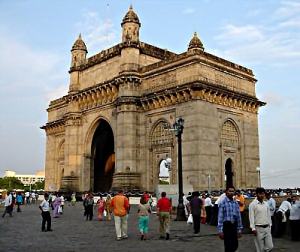 The city of dreams and opportunities, of opulence and poverty. Mumbai is India’s most cosmopolitan city, the capital of Maharashtra and the one which rarely sleeps. Glamour and wealth residing in some of the world’s most expensive real estate lives next door to some of India’s very poorest people living in the slums.
The city of dreams and opportunities, of opulence and poverty. Mumbai is India’s most cosmopolitan city, the capital of Maharashtra and the one which rarely sleeps. Glamour and wealth residing in some of the world’s most expensive real estate lives next door to some of India’s very poorest people living in the slums.
A city of contrasts indeed!
It has excellent communications and its international airport is the main route into Goa and Karnataka. The main railway station is the route out to cities all around India.
Best time to visit is winter time, October through to March. Humidity becomes unbearable ahead of the monsoon in June to September when bad flooding can occur.
Places of Interest:
AJANTA AND ELLORA CAVES
Visiting these caves would involve a short flight from Mumbai but well worth the trip. At Ajanta, the caves were carved into rocks by Buddhist monks from 200BC to 650AD. There are intricate paintings inside depicting the life of Buddha. Ajanta is closed on Monday . The caves at Ellora feature Hindu, Jain and Buddhist sculptures. These are closed on Tuesday.
CHHATRAPATI SHIVAJI MAHARAJ MUSEUM (PRINCE OF WALES MUSEUM)
Formerly known as the Prince of Wales Museum, it was built as a tribute to the young future King George V. Designed by the same Scottish architect who designed the Gateway to India. It is Mumbai’s largest and most popular museum. There are three floors of Indian artefacts .
CHOWPATTY BEACH
This beach has featured on many Bollywood sets and, after a clean-up campaign, is generally litter free with golden sand. A perfect place for a stroll and at night it transforms into a carnival atmosphere with children’s fairground rides and street food. During the Ganesh Chaturthi Festival in August/September hundreds of clay effigies of Ganesh are floated in the sea which is an amazing sight.
DHOBI GHATS
An awesome sight to see thousands of washer men and women doing the city’s laundry. You may be able to be shown around, although photographs are not strictly allowed.
ELEPHANTA ISLAND
A full day is required to properly enjoy this trip. This is Mumbai’s most important historical site. A series of Hindu caves, carved into the rock, reveal some of the finest temple carvings in India.
Boats to the island leave from the Gateway to India. It can get crowded so go early!
GATEWAY OF INDIA AND TAJ MAHAL PALACE
The Gateway to India is Mumbai’s principal landmark and was designed following a visit by King George V and constructed in 1924. It was the point of arrival and departure for many visitors over the years. Behind it lies the famous Taj hotel, well worth visiting to marvel at the beautiful interior and its impressive staircase, even if you don’t stay!
HAJI ALI DARGAH
This is Mumbai’s most sacred Muslim shrine, built in the 19th century. Non Muslims are welcome but not photography and shoes must be left at the entrance. Only accessible at low tide, otherwise the island is cut off and gates are locked.
MANI BHAVAN
A small museum housed in the building where Mahatma Gandhi stayed when he was in Mumbai. It is a very moving place full of letters and photographs and shows you the room in which he stayed. Worth visiting.
VICTORIA TERMINUS
An extravagant Victorian-Gothic construction, described by travel writer Jan Morris as “the central building of the entire British Empire.” It was created in 1887 and is still Mumbai’s biggest and busiest railway station. It is well worth visiting at lunch time to watch the tiffin-wallahs arriving from the suburbs carrying the packed lunches for the workers. An amazing experience!
BOLLYWOOD MOVIE
Day long tours can be organised to teach visitors about acting, dancing and directing films and then give them the opportunity to visit a real studio. It does work out as a rather expensive treat.
Alternatively you can’t leave the home of Bollywood without watching a film, so buy a ticket and head for the nearest cinema. Or loiter around Gateway of India where casting directors sometimes look out for foreigners to star for the day as an extra, and you get paid!







